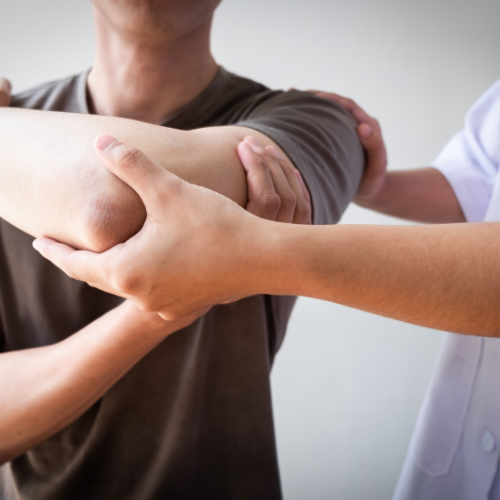Back Care Awareness Week 2025: Moving Well at Work
- Marlborough Chiropractic Clinic

- Sep 30
- 4 min read

Why Musculoskeletal Health Matters at Work
Pain and stiffness affecting muscles, joints, and nerves represent a significant health challenge in the workplace. These conditions account for approximately 30% of general practitioner appointments and result in the loss of over 30 million working days annually.
Workplace habits significantly contribute to these problems. Extended periods of sitting, inadequate workstation setups, heavy or repetitive lifting, and insufficient breaks can all exacerbate strain on the back and joints. Over time, these factors may lead to pain, stiffness, decreased productivity, and potentially long-term injuries.
As part of Back Care Awareness Week (14th-19th October) we want to share some simple, practical exercises to help keep people moving well at work.
For Our Army of Desk Workers:
Top Tips for Staying Active and Reducing Stiffness at Your Desk

The key to protecting your nerves, muscles, and joints is to keep moving throughout the day. Short bursts of movement stimulate nerves, elongate muscles, improve circulation, and prevent joint stiffness. Taking a few minutes each hour to stretch, change position, or walk around can have significant impact over time.
Set a Movement Timer: Every 30–60 minutes, stand up, stretch, or take a short walk. Even 2–3 minutes of movement helps reduce stiffness and improve circulation.
Desk Stretches for Shoulders and Back: Simple stretches like shoulder rolls, neck stretches, and seated spinal twists can relieve tension and improve posture throughout the day.
Use a Standing or Adjustable Desk: Alternating between sitting and standing encourages natural movement and reduces prolonged pressure on the lower back.
Active Breaks: Instead of scrolling on your phone during breaks, take a short walk around the office, do a few calf raises, or march in place to keep blood flowing.
Strengthen and Mobilise: Incorporate small exercises that encourage muscle activation like:
Extending one leg straight out and holding it for 10 seconds and repeating on the other side.
Pulling your shoulder blades together, holding for a few seconds, and releasing whilst you're on the phone.
1 minute of walking up and down the stairs to work all of the leg and hip muscles when you need to pop to the loo.
For All Our Manual and Construction Workers
Some Practical Tips for on the Construction Sites

Dynamic Warm-Ups Before Work: Start your day or begin your shift with 5-10 minutes of dynamic stretching and movement to prepare your body for lifting, bending, and climbing. Movements like arm circles, leg swings, and side bends through your lower back are great. 1 minute of each exercise will get the body prepped and ready for movement and help reduce injury risk.
Use Proper Lifting Techniques: We all know this one but we don't practise it! Bend at the knees, keep your back straight, and stick your bottom out to engage your core when lifting heavy materials. Using correct form prevents unnecessary strain on the smaller back and shoulder muscles.
Take Micro-Mobility Breaks: Even on busy sites, pause for brief stretches between tasks. Simple exercises like shoulder rolls, a chest stretch, gentle back bends, or calf raises can maintain joint mobility and circulation throughout the day.
Alternate Tasks and Movements: Avoid repetitive motions by rotating tasks when possible; switching between lifting, carrying, climbing, and pushing helps prevent overuse injuries and keeps muscles balanced. Or if you can‘t switch task, switch sides by shovelling with your opposite hand, stand the other direction on a ladder or on the floor so your body is rotating the other way. This helps to stretch out the muscles and joints and nerves in to the other direction.
Look after your body: A day on the construction site is like a 6-hour session in the gym! You will need to stretch and massage hard worked muscles to help with recovery from the load. Hamstring stretches, spinal mobility stretches, and foam rolling can all help to alleviate post work tensions. Hot baths and massage help increase blood flow to aid the recovery macrostrains of nerves, joints and muscles.
For Our Patients Who Work With the Smaller Desks and Chairs
A few tips for working in schools, preschools and small children

We have many patients who have active rolls with younger children, but often the ergonomics are for the children and not the teachers and teaching support crew!
Use Your Legs, Not Your Back: When bending over to the lower tables, position yourself next to the table on one knee, with the other up in front of you. This reduces the strain on your back and will also strengthening your legs as you get up and down from the floor!
Alternate the side you sit next to the children: If you always sit on one side to look at their work, your neck will become over stretched one side and tight on the other -alternating between sides helps keep the muscles more in balance each side of your neck.
Incorporate Movement into Playtime Turn physical activity with children into light exercise for yourself: squats while helping them up, lunges while guiding their movements, or reaching and stretching during games. This keeps your body active without feeling like extra work.
Speak to us today!
If you are struggling with stiffness at work, or with particular positions, give us a call today to speak to a chiropractor. We can give advice on postures, modifications, as well as assess joint restrictions may be present in the spine, pelvis or shoulder that are contributing to the altered movement and suboptimal function.






Comments